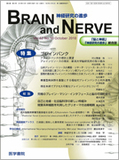Japanese
English
- 有料閲覧
- Abstract 文献概要
- 1ページ目 Look Inside
- 参考文献 Reference
はじめに
神経,精神疾患研究のための脳収集は19世紀後半から始まり1,2),その後ブレインバンクとして発展した。実際にヒトの死後脳を神経研究において使用することの意義・重要性が広く認識されるようになり,ブレインバンクは現在欧米諸国で多数設立されている。日本においては,ブレインバンクは数カ所設置されているが,個々の施設が独自のシステムを導入しており,ネットワーク化されておらず,いまだ欧米に遅れをとっている。本稿では,国際的にも最先端を行く米国コロンビア大学に設置されたNew York Brain Bank at Columbia University(NYBB)のbanking処理・管理方法について概説しながら,日本ブレインネットを構築する際に応用可能かどうか検討する。
Abstract
Brain banks are becoming increasingly important due to a worldwide decline in autopsy rates, and the consequent shortage of tissue for research purposes. The New York Brain Bank (NYBB) at Columbia University is widely praised for its well-organized system of tissue harvesting, indexing, and retrieval. I was fortunate enough to study at this prestigious institution. Constructing similar brain banks in Japan would enable us to (1) pool tissue from multiple centers, (2) standardize results and (3) extract maximum benefits from the limited number of brain specimens.
As a prerequisite, the prosector must have excellent knowledge of neuroanatomy and neuropathology. One-half of each brain is dissected in the fresh state, and the cortical samples are recorded using the map of Brodmann area (BA); and all samples are barcode labeled. The quality of the brains is assessed by measuring the tissue pH of and 28S and 18S ribosomal RNA levels in the cerebral cortex (BA37).
This report describes the NYBB's management and electronic tissue-tracking system,including the processing of the brains in the fresh state and the storage of standardized frozen samples. I will also disscus the feasibility and potential benefits of setting up similar brain banks in Japan.

Copyright © 2010, Igaku-Shoin Ltd. All rights reserved.


